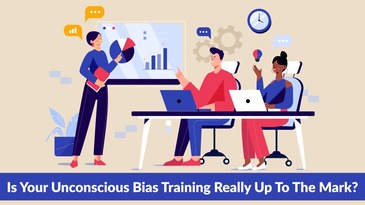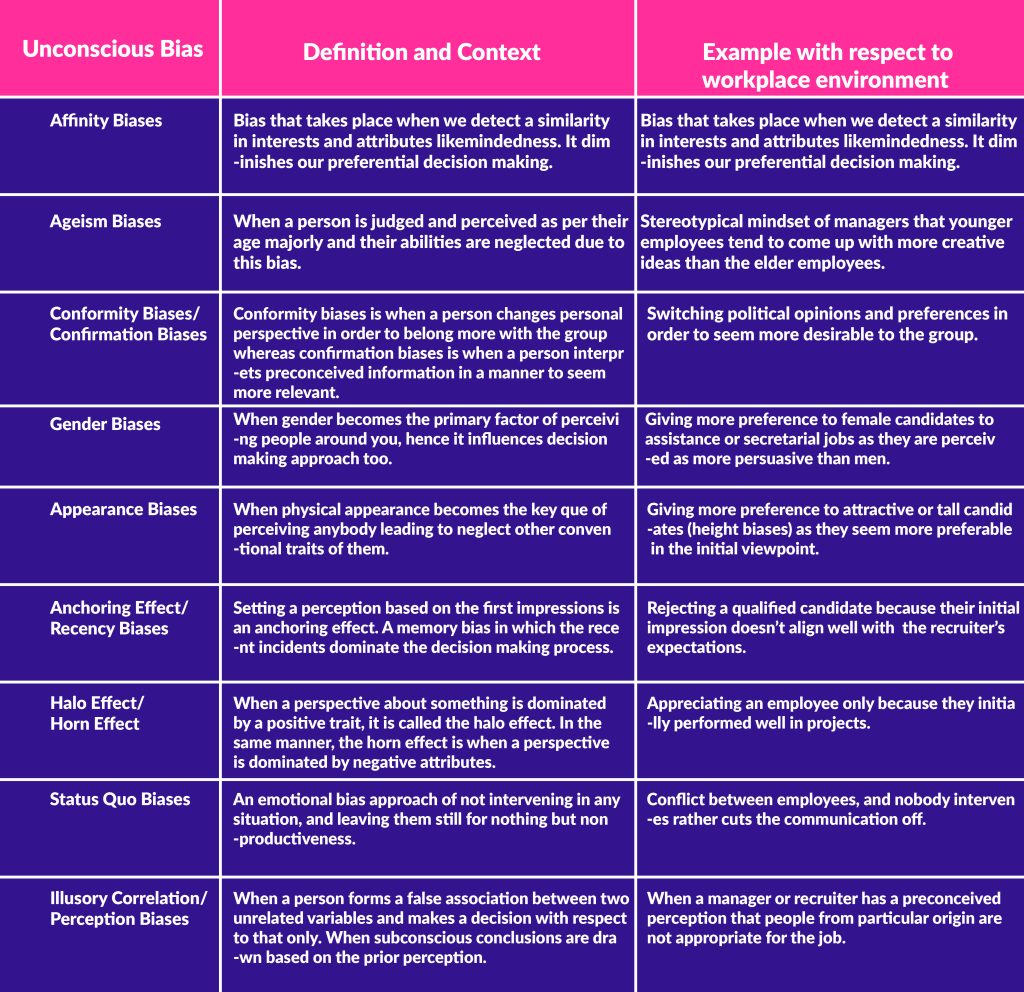
Human behavior is a comprehensive science to understand. Emotions, reactions and actions are all correlated. We, being social animals, are surrounded by numerous phenomena that are for and by us. With the years of growing up, we learn to strive and rationalize everything concerning our preferences and mindset attained over time and experiences. Such a sense of rationalization is reflected in many of our reflections in the form of our perspectives, opinions, dialects, preferences, and whatnot. Sometimes, people outgrow certain learning and mold prominent things concerning their needs. Workplaces are such setups that actively make us part of the social spiral. We are intensively prepared to be a part of that spiral and act as an element to strive desirably. Even though workplaces are formal setups, informal links prevail. Implicit biases are a passive part of our behavioral reflections. We form a rational opinion or judgment about anything concerning our previous learning. Stereotypes are another side of the story that firms from unconscious or implicit biases. Such judgments can land us in poor decision-making. In this blog, we will explore how to diminish or conceal the mannerisms around the invincible implicit biases or unconscious biases at the workplace, identify them, identify types of biases, and formulate concerning implicit bias situations.
What are unconscious biases?
Technically quoting, unconscious biases are mental shortcuts that influence our assumptions, beliefs or attitudes and reinforce stereotypes. Unconscious biases are passive and are a normal part of the human brain. Acknowledging, correcting, and labeling biases would play a more significant role in remedying the approach. Also, biases could be defined as subconscious attitudes, which are not coherent thoughts but are engraved as responses to past situations. Unconscious biases are deliberate reactions; though improving mindfulness could help a lot. Unconscious bias training is another remedial aspect to correct such reactions and responses. Why reaction and responses? Reactions and responses are short-term amendments, and with recurrent correction, they could lead to a better and more rational perspective. Perceptions are a bigger picture; hence, with time and intervention, they can be shaped. How are workplace and unconscious biases related? Well, not an active correlation exists. But passive perceptions that tend to impact our decision-making abilities stay in effect.
Individuals are expected to socialize and deal with diverse groups of people at work, to which they can form a respective perspective based on unconscious biases. A more subtle example of an unconscious bias at work could be assigning only field tasks to male employees. Here, in this example, the gender biases outshine. Prominent biases like gender biases are embedded, and in accordance, we often act unknowingly. Each person at work is affected by unconscious biases. For managers and administration custodians, it can influence hiring decisions and policy-making. For employees and executive custodians, it can impact their attitude towards colleagues. Why is it crucial to address unconscious biases? Workplace setup can affect an individual’s work-business dynamic in general. It can also impact an organization’s work culture and team dynamics and disrupt the rapport among the group. These biases are pervasive, and combating them is highly possible.

The quoted biases are common, and there are higher probabilities of them being played out in the workplace environment. As we have identified prominent implicit biases, focusing on reducing these impressions is crucial. In workplace environments, managers and diversity managers should initiate unconscious bias training programs to reduce the stereotypical mindset and promote a rational and empathetic approach. Biases deteriorate our ability to reason and affect our decision-making abilities. Unconscious bias training is reflective training where a particular organization’s culture is proposed with customizations.
Is Your Unconscious Bias Training Really Up To The Mark?
Unconscious bias training is intervention-oriented training that assists individuals in identifying and addressing the biases that impact their decision-making and may lead to discriminatory behavior. Unconscious bias training promotes diversity, inclusivity, awareness, and empathy and paves the way for a positive workplace culture. With unconscious biases being addressed and corrected effectively, an individual can make more objective decisions embedded with respect and collaboration among the group. Apart from its effectiveness, conventional unconscious bias training takes a backseat as it fails to address systemic issues and instead highly emphasizes individual behaviors and attitudes. The structure of these trainings does not include regular follow-ups, fails to address hierarchy dynamics, relies on awareness, and lacks an update with trends concerning diversity. To overcome these drawbacks, unconscious bias training should be customized or redesigned per the organization’s culture, addressing systemic issues and association of reinforcement and support.
Summing up what has been discussed above, researchers suggest that only 10% of unconscious bias training effectively reduces biases in the workplace. Unconscious biases are subconscious prejudice-coated attitudes and behaviors towards a particular person or group. The authority falls on managers to implement effectively, reduce bias, and promote sensitivity. To emphasize that they can intervene and change their respective culture to encourage positivity in the workplace environment. If these training promote empathy, sensitivity, diversity, and inclusion in the workplace, then the probability of success is high. Lastly, a practical or up-to-the-mark unconscious bias training program aims to acknowledge unconscious or implicit biases among targeted populations. Post acknowledging comes with interacting and investigating the concerned area and, with respect to that, implementing data-driven strategies and decisions.




